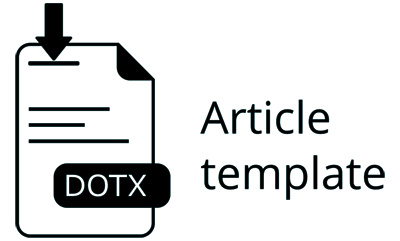IKLIM KESELAMATAN KERJA PADA PROYEK KONSTRUKSI DI SURABAYA
Abstract
One measure of global competition in the construction sector is the low accident rate (zero accident). To realize this, a conducive work safety climate is needed. Work safety climate can be realized needed occupational safety and health management and workforce support. This study aims to evaluate the work safety climate. Sampling was used a purposive sampling method with a work safety climate measurement tool in the form of a questionnaire based on NOSACQ-50 consisting of 7 dimensions, with analysis using a descriptive frequency test, Mann Whitney, and Chi-Square. The results showed that the three projects studied had a good safety climate, besides there were differences in management's safety priorities. The other dimensions, that are the dimensions of developing work safety management, fairness to work safety management, commitment to employee safety, employee safety priorities and the attitude of not wanting to risk work safety, communication and safety training including trusting in peer safety, competence, and worker’s confidence in the work safety system shows that there is no difference. Chi-square test shows that there is no relationship between safety climate with education level, age level and years of service.
References
Huda, U. F., Sukmawati, A., & Sumertajaya, I. M. (2016). Model Perilaku Keselamatan Kerja Karyawan Pada Industri Berisiko Tinggi. Jurnal Manajemen Teknologi, 15(1), 51–66.
Kines, P., Lappalainen, J., Mikkelsen, K. L., Olsen, E., Pousette, A., Tharaldsen, J., … Törner, M. (2011). Nordic Safety Climate Questionnaire (NOSACQ-50): A new tool for diagnosing occupational safety climate. International Journal of Industrial Ergonomics, 41(6), 634–646. https://doi.org/10.1016/j.ergon.2011.08.004
Mulyasari, W. (2013). Pengembangan Model Iklim Keselamatan Terhadap Kecelakaan Kerja Dan Penyakit Akibat Kerja (PAK). Prosiding Seminar Nasional Manajemen Teknologi XVIII, 1–9.
Prabarini, P., & Suhariadi, F. (2018). Iklim Keselamatan Kerja dan Big Five Personality Sebagai Prediktor Perilaku Keselamatan Karyawan. Jurnal Psikologi Teori Dan Terapan, 9(1), 1–16. https://doi.org/10.26740/jptt.v9n1.p1-16
Prasetyo, E., & Budiati, R. E. (2016). Analisis Program Inspeksi K3 sebagai Bentuk Upaya Promosi Budaya K3 di Lingkungan Kerja. Jurnal Kesehatan Masyarakat, 4(1), 1–8.
Pratama, A. K. (2015). Hubungan Karakteristik Pekerja Dengan Unsafe Action Pada Tenaga Kerja Bongkar Muat Di Pt. Terminal Petikemas Surabaya. The Indonesian Journal of Occupational Safety and Health, 4(1), 64–73. https://doi.org/10.20473/ijosh.v4i1.2015.64-73
Prihatiningsih, & Sugiyanto. (2010). Pengaruh Iklim Keselamatan dan Pengalaman Personal terhadap Kepatuhan pada Peraturan Keselamatan Pekerja Konstruksi. Jurnal Psikologi, 37(1), 82–93.
Priyono, A. F., & Harianto, F. (2019). Analisis Penerapan Sistem Manajemen K3 dan Kelengkapan Fasilitas K3 Pada Proyek Konstruksi Gedung Di Surabaya. Rekayasa Jurnal Teknik Sipil, 4(2), 11–16.
Sari, R. E. (2014). Evaluasi iklim Keselamatan Kerja dengan Menggunakan Metode NOSACQ-50 di PT. Primarindo Asia Infrastruktur, Tbk. Jurnal Psikologi Mandiri, 81–90.
Stackhouse, M., & Turner, N. (2019). How do organizational practices relate to perceived system safety effectiveness? Perceptions of safety climate and co-worker commitment to safety as workplace safety signals. Journal of Safety Research, 70, 59–69. https://doi.org/10.1016/j.jsr.2019.04.002
Sugiyono. (2001). Statistika untuk Penelitian. Bandung: Alfabeta.
Sukapto, P., Djojosubroto, H., & Bonita. (2016). Evaluasi iklim Keselamatan Kerja dengan Menggunakan Metode NOSACQ-50 di PT. Primarindo Asia Infrastruktur, Tbk. Simposium Nasional RAPI XV, 143–149. Surakarta.
Suma’mur. (2009). Hiegine Perusahaan Dan Kesehatan Kerja. Jakarta: CV. Agung Seto.
Sutrisno, H. Y., Sandora, R., & Rachman, F. (2000). Pengaruh Iklim Keselamatan Terhadap Perilaku Keselamatan Pada Proyek Tol Surabaya - Mojokerto Seksi 1B. Proceeding 1st Conference on Safety Engineering and Its Application, 19–23.
Winarsunu, T. (2008). Psikologi Keselamatan Kerja. Malang: UMM Pers.
Zhang, R. P., Lingard, H., & Nevin, S. (2015). Development and validation of a multilevel safety climate measurement tool in the construction industry. Construction Management and Economics, 33(10), 818–839. https://doi.org/10.1080/01446193.2015.1108451
Authors who publish with this journal agree to the following terms:
- Authors retain copyright and grant the journal right of first publication with the work simultaneously licensed under a Creative Commons Attribution License that allows others to share the work with an acknowledgement of the work's authorship and initial publication in this journal.
- Authors are able to enter into separate, additional contractual arrangements for the non-exclusive distribution of the journal's published version of the work (e.g., post it to an institutional repository or publish it in a book), with an acknowledgement of its initial publication in this journal.
- Authors are permitted and encouraged to post their work online (e.g., in institutional repositories or on their website) prior to and during the submission process, as it can lead to productive exchanges, as well as earlier and greater citation of published work (See The Effect of Open Access).
 Abstract viewed = 784 times
Abstract viewed = 784 times
 PDF downloaded = 1318 times
PDF downloaded = 1318 times










